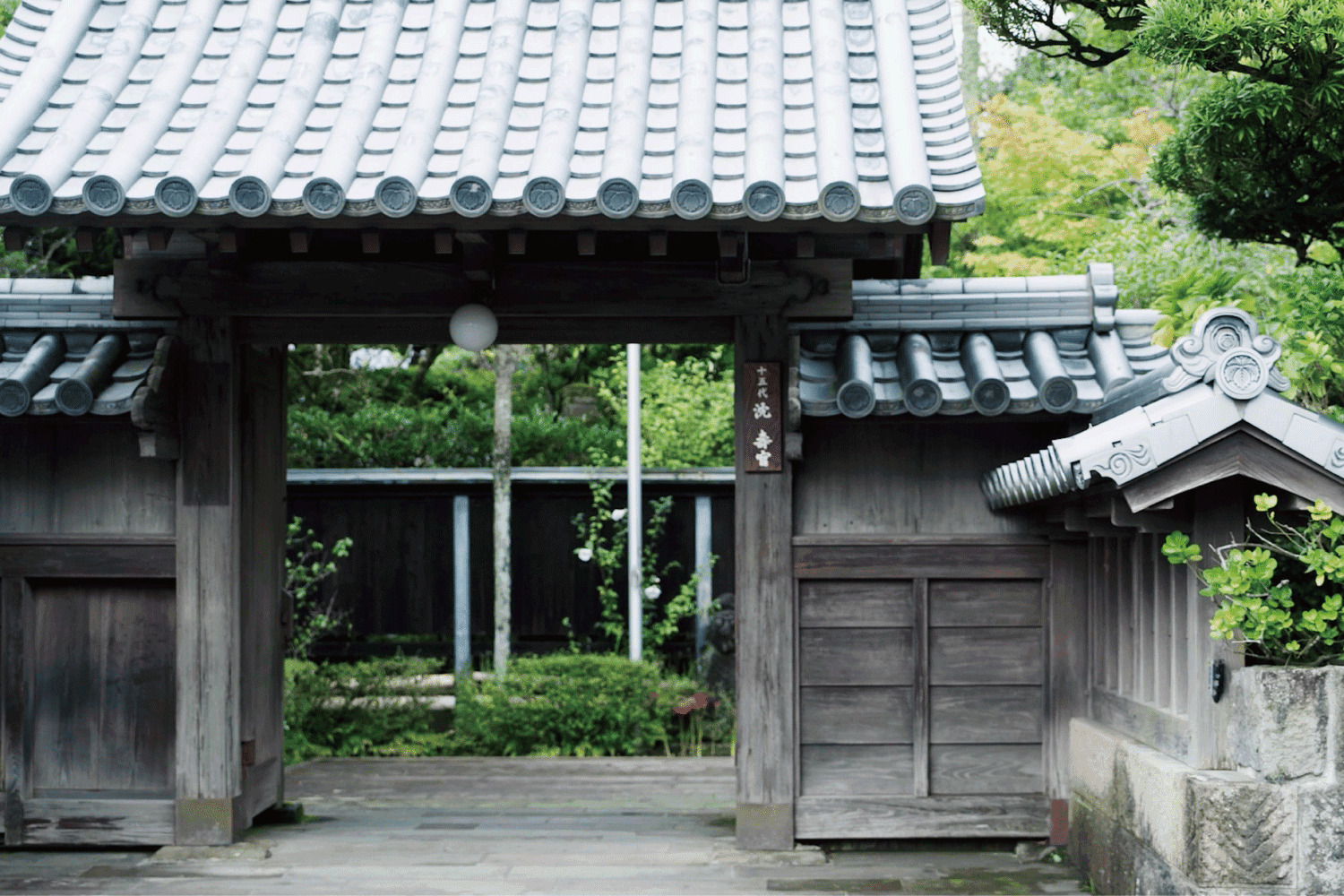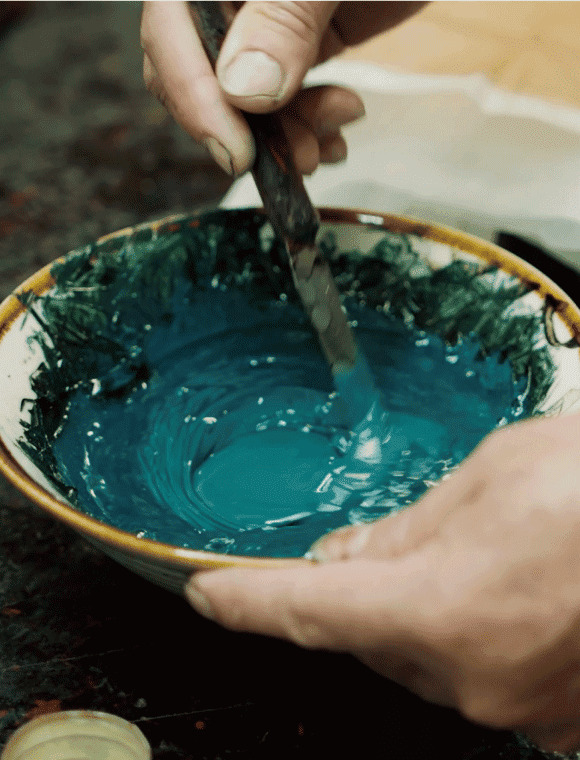薩摩焼十五代沈壽官
インタビュー
薩摩焼 十五代 沈壽官
1598年豊臣秀吉朝鮮出征の際朝鮮半島より連行された初代・沈当吉以後400年以上にわたり薩摩焼を作り続けてきた。生成された白い粘土に透明な釉薬をかけて作る白薩摩、自然の状態の土を用いた民需品の黒薩摩を、焼き物がなかった地で生み出し、現在に至る。
Chin Jukan XV / Satsuma Ware
Satsuma Ware has been made for over 400 years since Chin Tokichi I was brought to Japan from Korea when Toyotomi Hideyoshi invaded the country in 1598.
Thus into a land without pottery were born Shiro Satsuma, made with clear glaze on white clay; and Kuro Satsuma, consumer goods made with clay in its natural state. Both of these continue to be produced in Kagoshima today.

これは薩摩焼に限った話ではなく全国的な傾向なんですが、元々、産地で作る作り手とそうではないところで作る作り手さんがいっぱいいて、昔は産地で人たちは産地の特性、ある種の縛りがかかっていたわけですけども、最近はそういうものも弱くなっていて。
ただ私の中で伝統工芸というものは一朝にして出来るものではないわけですね。
400年の間には数千人という陶工たちがそこにかかってきてますし。
それから守護大名として700年、この薩摩の地に君臨している島津家の美意識といったものあるわけですね。
そういった中で育まれてきた薩摩焼ですので、僕はやっぱりローカルというのはすごく大切だと思っていますから、そういった部分では鹿児島の風土、鹿児島の自然環境、あるいは鹿児島の美意識といったものがきちんとあることが、実はこれからもっと重要になっていくんじゃないかなと。
これは僕の考え方ですので、それが必ずしも正しいかどうかわかりませんけども。
There have always been lots of two types of craftsmen: those who work in the homes of their crafts, and those who do not. In old days, craftsmen in production centers were naturally in a way bound by the characteristics of their location,
But recently, that binding has weakened.
This isn’t just true of Satsuma Ware; it’s a nationwide trend. But to me, traditional crafts aren’t something that can be produced overnight.
Thousands of potters have been at it for 400 years.
There are also the aesthetics of the Shimazu Clan,
Who have reigned in this land of Satsuma as territorial lords for 700 years.
That is the environment in which Satsuma Ware has been fostered, So I just feel that being local is really important.
That’s why it’s important for Kagoshima to properly have its own culture, its own natural environment, or its own aesthetics,
But that all might become even more important from here on.
That’s my opinion, so I don’t know whether it’s necessarily true.


僕はやっぱりローカル、出来るならば上質なローカル。
ここにしかないものが大切なんじゃ無いかなと。
ユニバーサルな物をここで敢えて作る必要はないと思っています。
鹿児島は本土南端ですので、そういった部分では京都や東京から比べると最遠な地なわけですよね。
そういう目線で見ると、文化果つる土地かと思ったりもするんですけれど実は日本の最南端ということは海外、つまり世界に最も近いとも言えます。
それからやっぱり700年間、島津家が支配してきたということは途中で国替えがないわけですから、ある意味、透徹した美意識で貫かれているということは言えると思いますね。
それに京都・東京からの文化がこちらにきても、徐々に風土の中で変容していくわけですよ。
その変容していく有様がとても面白いな、ユニークだな、かけがえのないものだなと僕は思いますね。
That’s my opinion, so I don’t know whether it’s necessarily true. After all, I’m a local. A quality local, if I can be. I think things that can only exist in one place are precious. I dare say that I don’t think there’s any need to make universal things here.
Kagoshima is the southern tip of mainland Japan,
So it’s as far as you can get from Kyoto or Tokyo.
When you look at it like that,
It may also seem like the farthest reach of the country, but Kagoshima being at the southernmost edge of Japan also means It’s the closest to foreign countries—
In other words, the closest to the world.
For 700 years,
The Shimazu clan has ruled this land without ever having been transferred out.
So you could say that in a way, their keen aesthetic sense has penetrated Kagoshima.
Plus, if culture from Kyoto or Tokyo makes its way here,
It gets gradually transformed in the climate of Kagoshima.
I think that that transformation is fascinating, unique,
And priceless.


沈壽官窯
〒899-2431 鹿児島県日置市東市来町美山1715
099-274-2358
https://chin-jukan.shop-pro.jp/
RECOMMEND
-
 Interview中薗 真幸 (川辺仏壇塗り) インタビュー
Interview中薗 真幸 (川辺仏壇塗り) インタビュー仏壇の漆塗りおよび漆塗りを鏡面にする蠟色(呂色)仕上げを主軸に、漆器製造や文化財の修復も行う。全国的に見ても廃仏毀釈が日本一厳しかった鹿児島鹿児島に洞穴を掘って信仰していたのが川辺仏壇の始まりと言われ、木地、宮殿、彫刻、蒔絵、塗り、仕上げ、金具の分業を一つの産地で行う。
-
 Interview金井 志人 (金井工芸) インタビュー
Interview金井 志人 (金井工芸) インタビュー奄美大島に自生するシャリンバイ(島の言葉ではテーチ木)で染色し、泥の鉄分と化学反応させて色を作る泥染めを行う。伝統工芸品・大島紬に使用する糸を染める仕事を軸に、身の回りのものの染色や色自体を鑑賞する作品やインスタレーションも手掛けている。
-
 Interview興紬商店 (本場大島紬) インタビュー
Interview興紬商店 (本場大島紬) インタビュー大島紬のデザインを考え職人に発注する織元。大島紬は奄美大島龍郷町発祥とされる絹の手織物で1300年ほどの歴史を持つ。製作は、30を超える工程を島内にいる職人の手作業により分業で行っている。伝統柄は、島の草花や生活用具などをモチーフにしている。
